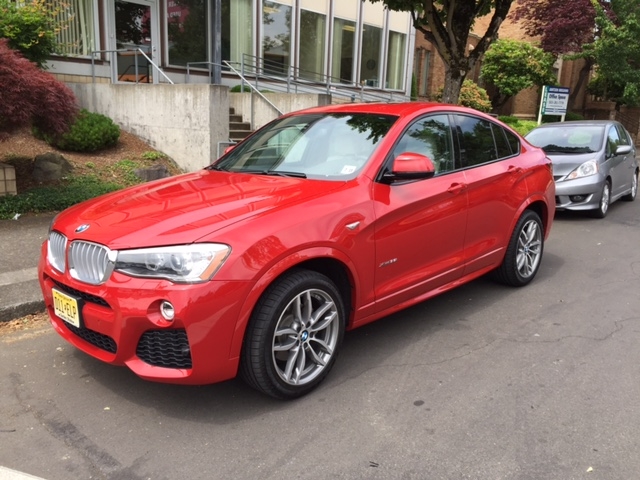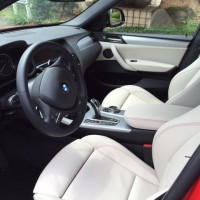
I’ve never had much use for today’s “sport” SUV.
When I tested the Porsche Cayenne Turbo for the New York Times in 2003, I found that it had blistering acceleration but felt very heavy. With an as-equipped price tag of $96k, buyers weren’t likely to take the Cayenne on any serious off-road excursions. And it didn’t have the kind of interior space you’d associate with a Ford Explorer or Chevy Blazer. I doubted that automakers would ever combine SUV utility with sports car handling in a way that didn’t feel like a compromise.
My position has changed.
I spent a recent weekend with a 2015 BMW X4 xDrive35i. My test car had a 3-liter, 300-horsepower twin-turbo 6-cylinder engine, 8-speed automatic and the “M Sport” package. Price was $57,450.
I took the X4 to visit a friend who has a 1954 Porsche 356 pre-A cabriolet for sale. He lives about 30 miles off of Interstate 5, and the roads to his house are sports-car perfect.
As I pushed the X4 into the turns, I was surprised to find that it really did handle. It didn’t feel ponderous like the Cayenne. It had easy, crisp acceleration, and it braked well. There was very little body-lean in the turns.
The layout and performance of the entertainment and climate controls didn’t measure up to the rest of the car, but that’s been a trouble spot for BMW for years.The stylish curve of the roof does create a large blind spot in the rear quarters, but that’s something you get used to. Otherwise, visibility was excellent, thanks to the high seating position. Cargo space was ample, and there was plenty of leg room for all passengers. The sub-$60k price is a bargain for all that the X4 offers
Until now, the idea of a true sport SUV seemed like an impossible fantasy, but the X4 is an significant step forward. Motorists seeking a high-visibility seating position and the ability to haul people and cargo no longer have to sacrifice a first-rate driving experience in the process.

